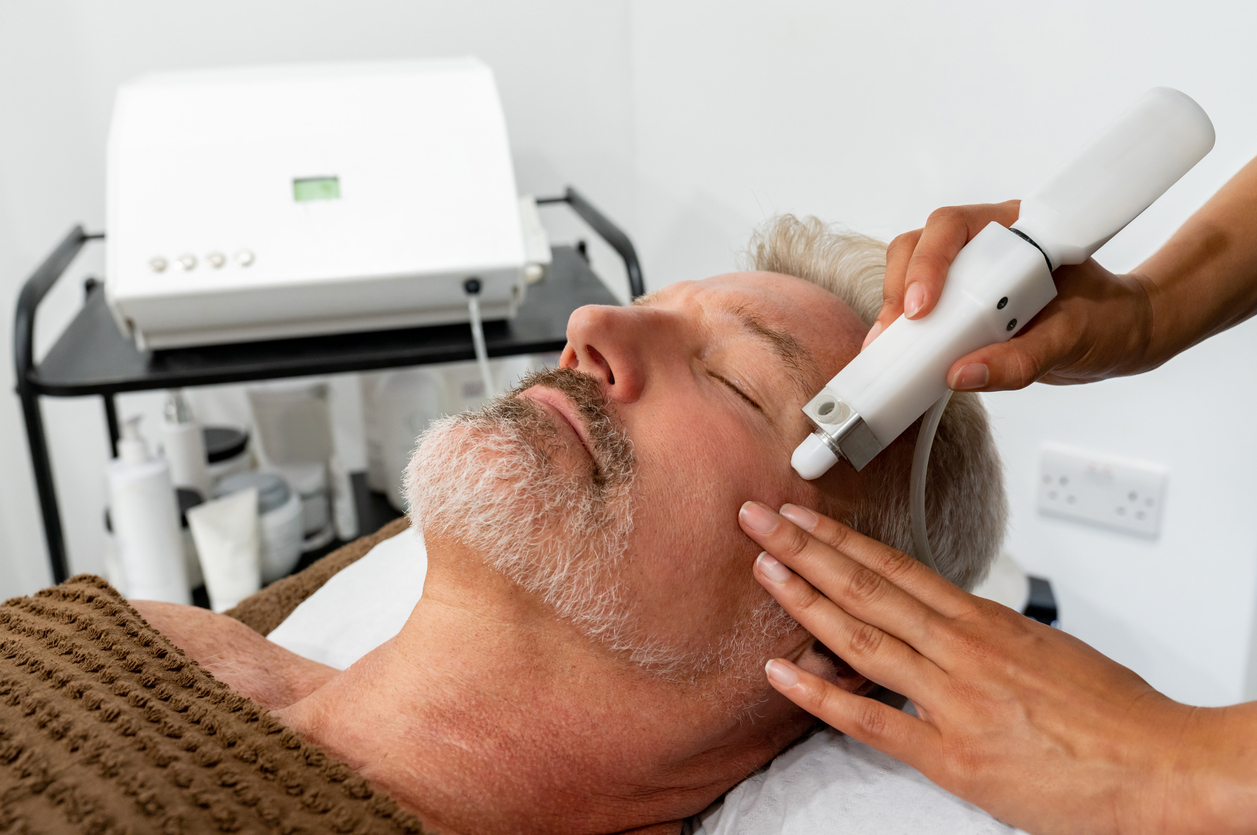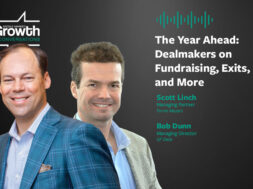Betting on the Face Card: Building out Aesthetic Healthcare Brands
Investors and advisors tracking med spas say there is ample opportunity for expansion and building platforms in a highly fragmented market comprised of small clinics

Walking around any major city lately, you’ve likely noticed a proliferation of med spas—clinics that offer aesthetic treatments like Botox, light therapy, facials, weight loss treatment and laser hair removal.
Investors have taken note, too, and private equity firms have started acquiring med spas or studying the market for future investment.
Some say many of these small, regional businesses are not yet “ripe” for the usual private equity playbook of buying a platform and then tacking on add-ons. Others, though, see the space as a fragmented, recession-resistant market primed for sponsors’ buy-and-build strategies.
Med spas straddle the consumer and healthcare sectors and are drawing in investors from both sides. Healthcare investors say that since the services are discretionary aesthetic treatments, they’re not subject to the same insurance reimbursement risk as other areas in healthcare. Consumer investors, meanwhile, say that interest in these services has held up even in challenging economic conditions, despite high costs.
“We’re in the earlier innings of consolidation,” says Miller Norman, principal at Blue Sea Capital in West Palm Beach, Florida. “Investors have been drawn to this consumer-healthcare sector because it’s a large, growing and highly fragmented market with attractive core fundamentals as the category was resilient during the last recession, has ample wellness and self-care tailwinds and isn’t subject to third party reimbursement.” He says he’s seen numerous med spa assets come to market in the last 18-30 months and expects this trend to continue.
He admits there is a lack of scaled platforms in the space, which has driven some investors to consider starting with a smaller platform than usual. “Similar to other multi-site sectors, the potential exists to build an industry leading platform.” The market’s potential has grown amid a renewed importance of self-care and brands being hyped up by influencers in the TikTok and Instagram era.
Investors have been drawn to this consumer-healthcare sector because it’s a large, growing and highly fragmented market with attractive core fundamentals as the category was resilient during the last recession, has ample wellness and self-care tailwinds and isn’t subject to third party reimbursement.
Miller Norman
Blue Sea Capital
Small Businesses, Big Potential
Industry experts say laser treatments, injectables, and hormone therapy are some of the most popular services available. Med spas have also benefitted from proliferating demand for Ozempic and other weight loss drugs and services. According to the American Med Spa Association, there were about 1,600 med spas in the U.S. in 2010. By 2015, that number more than doubled to 3,625.
“The barriers to entry in this category are admittedly relatively low—a single provider can set up shop and create a practice that provides a decent lifestyle. That said, there are significant barriers to successfully scaling,” says Corey Benjamin, managing director in Harris Williams’ Consumer Group. “While aesthetics are lower-acuity than other healthcare services, these businesses still deal with complex challenges, particularly as they expand across markets. As a result, we’ve only seen a handful of larger businesses emerge so far.” Sources cited recruiting quality providers, compliance in different markets and effective marketing/sales strategies as some of the barriers to growth.
Benjamin notes that there is a significant gap between the largest aesthetic platforms and the next tier down. “The relative scarcity of larger investable opportunities is a major factor in the interest we’re seeing in buy-and-build strategies focused on smaller and mid-sized companies,” Benjamin adds.
Several high-profile PE firms have acquired or built platforms in this area as of late.
SkinSpirit, a Seattle-based provider of aesthetic skin and body care, announced a minority investment from KKR in 2022. Last year, Incline Equity Partners invested in Petoskey, MI-based Cosmetics Skin & Laser Center. 2023 also saw Levine Leichtman Capital Partners partner with SEV, a manager and operator of med spas that offers hair removal, injectables, body contouring and other services. Varsity Healthcare Partners formed Aesthetic Alliance to consolidate businesses in the cosmetic surgery and med spa arena last year, too, when Varsity made its first investment in Edna Plastic Surgery.
Lauren Antion, co-head of the beauty, personal care and wellness practice at Intrepid Investment Bankers in Los Angeles, says the med spa space has become increasingly attractive from an M&A perspective over the last several years.
Investors that typically focus on larger transactions are “dipping below their equity check minimum to get their foot in the door with a platform investment in the med spa sector, given the opportunity to expand through both organic growth as well as M&A,” she says. Geographically speaking, many of the med spa chains are concentrated on the coasts and in larger cities, but there is more of a push to expand in the Midwest.
“The sector isn’t recession proof but it’s fairly recession resistant,” says Antion. “If you’re receiving treatments such as Botox or other neurotoxins on a regular basis, consumers feel the need to continue spending on those things—especially when there is a demonstrable before and after.” Valuations in the space depend on the size of the business in addition to retention rates, margins and pricing, and service offerings, Antion explains. A single location practice may be valued at low-to-mid single digit EBITDA multiples, while smaller multi-unit practices with two or three locations have received high single digit EBITDA multiples, Antion says. Larger multi-site businesses can get double digit EBITDA multiples in a sale.
Investment Paths
Some private equity firms are going the traditional route and buying platforms to tack on add-ons. Others are forming specific acquisition platforms or subsidiaries for med spas, or consolidating med spas via holding companies.
VSS Capital Partners, the private equity sponsor behind surgery and cosmetic procedures portfolio company Olympus Cosmetic Group, added cosmetic surgery and med spa provider Artisan Plastic Surgery and Artisan Beauté to its platform in May. Aditya Govil, vice president at VSS, says he likes the lack of reimbursement risk in these businesses, where the money from procedures is collected either entirely upfront or over months of installments before the surgery.
Govil says the firm is looking for additional add-ons for Olympus and has 10 or more in its pipeline. He believes Olympus is well insulated from market cycles. “We looked at data from the GFC (Great Financial Crisis) and COVID, and the peak-to-trough decline wasn’t as large as you would expect. It varied by the type of procedure, but the bounce back was very rapid.” Even though these are elective procedures, the people seeking them out are usually older, financially stable, affluent and have a high-level of savings, Govil continues.
During the COVID-19 pandemic in 2020, med spa services declined but they bounced back significantly in 2021. “According to the 2022 Medical Spa State of the Industry Report, the year-over-year industry revenue percentage growth rate declined by 26% in 2020, but the industry bounced back in a big way in 2021, increasing by a rate of 69.5%,” says a 2024 article from the American Med Spa Association. “Since then, the industry has stabilized—people aren’t quite as anxious to get their treatments as they were in late 2020 and 2021, but business continues to grow at a steady rate.”
Coming from the holding company angle, Annie Aesthetic is looking to partner with and acquire best-in-class clinics across the U.S. Founder and CEO Sam Schloss says he’s looking for top tier brands in the industry, clinics that have good retention rates and a sticky customer base, where clients keep coming back for services. “We’re looking for great teams to form true partnerships and a real collaboration with,” he says.
In some cases, it means working with founders who want to take some chips off the table. “These are people who really want the business to grow, but also want to spend time doing what they love best, whether that’s seeing clients, training or focusing on personal responsibilities,” Schloss adds.
The holding company set-up helps the firm take a long-term view, without having to think about an exit three to five years down the line, according to Schloss. The business was founded two years ago, seeded and incubated by Tucker’s Farm, a generalist holding company founded in 1994 as a small goat dairy that has since broadened its investment scope into a variety of sectors. In 2022, Tucker’s Farm also provided a strategic growth investment to VIO Medspa, which was recently acquired by Freeman Spogli.
Taking another approach, Princeton Medspa Partners is a Princeton, NJ-based company which describes itself as a “national medspa acquisition platform in the high-growth, highly fragmented approximately $30 billion U.S. medical aesthetics market.” Princeton Medspa Partners received a $120 million investment from BC Partners in June. The company was founded by James Waskovich, who is also the founder of Princeton Equity Group, a private equity firm that invests in high growth franchisor and multi-unit concepts. The Princeton Medspa business was founded with family office money and sits outside Princeton Equity Partners’ closed-end fund business.
Waskovich says he started looking into the med spa category in 2017, made his first investment in 2019 and ramped up in 2021. “We partner with best-in-class providers in their geography. We like suburban markets. Today, we have a platform with 14 locations and are growing very rapidly,” he says. The business is looking to expand in smaller cities, where the med spa market as mature yet. Waskovich calls these “non-NFL cities,” like Tucson or Albuquerque. “These would be affluent high-growth, mid-size cities,” he says.
“It’s a highly fragmented industry. There are 8,000 med spas in the country and not a lot of aggregators in this space,” Waskovich says. The category continues to grow despite broader economic headwinds, he adds, and injectables have been some of the most in-demand services. “We don’t believe that this spend is that discretionary,” Waskovich says. “What’s more important than your face?”
Anastasia Donde is Middle Market Growth’s senior editor.
Middle Market Growth is produced by the Association for Corporate Growth. To learn more about the organization and how to become a member, visit www.acg.org.


